
Cartoon critics Phil Witte and Rex Hesner look behind the gags to debate what makes a cartoon tick. This week our intrepid critics take a look at Swimsuits.
Hot, hotter, hottest. No, we’re not talking about the record-breaking heat this summer. We’re referring to the latest options in swimwear. Truth be told, we’re not talking about that either. Instead, this edition of Anatomy of a Cartoon takes a critical look at bikinis, thongs, and other forms of beach attire, as depicted by a fine array of cartoonists.
We start with Roz Chast, a favorite of New Yorker readers for decades. In this early cartoon, she gives us five individuals of different ages but equal dorkiness modeling swimsuits, using that term in the broadest sense. While each character is appealing in his or her own special way, our favorite is the guy with the matching flowered shorts and shirt. The tiny hat is a fine accessory, but what really pulls the ensemble together are the socks and sandals. Très chic, monsieur.
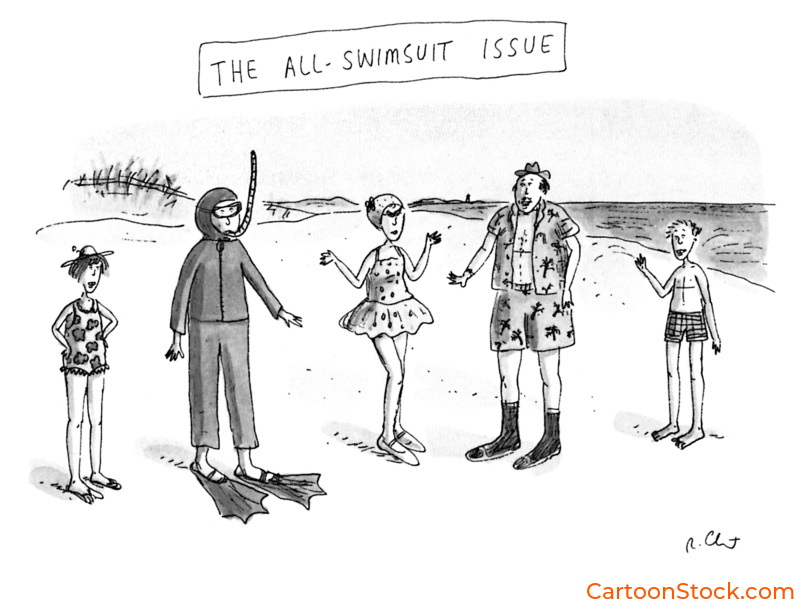
If you’re expecting a lot of cartoons featuring bikinis, you may be disappointed. Many cartoons feature men in swimsuits and the women who assess them. Here’s a brutal example by P.C. Vey. The familiar introductory phrase “If I had known you were going to” leads to the unexpected and devastating concluding words—a masterpiece of caption-writing.
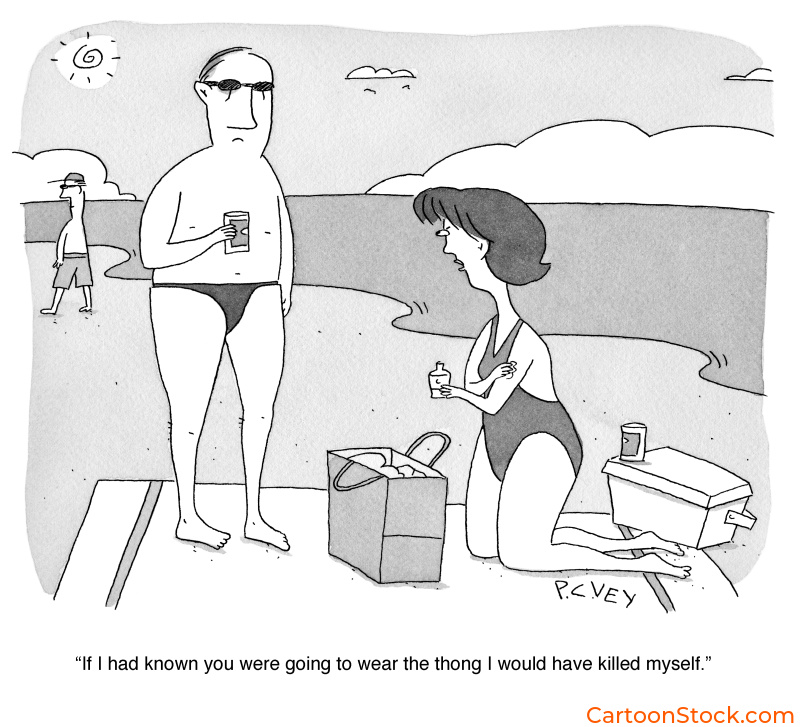
Another thong cartoon, again by Roz Chast, relies primarily on the illustration—and quite a sight it is. The emperor seems not entirely convinced by his feather-hatted courtiers that a strip of fabric, a crown, and lots of body hair is a good look for him. The emphasis on France as the arbiter of good fashion sense underscores the absurdity of the cartoon.
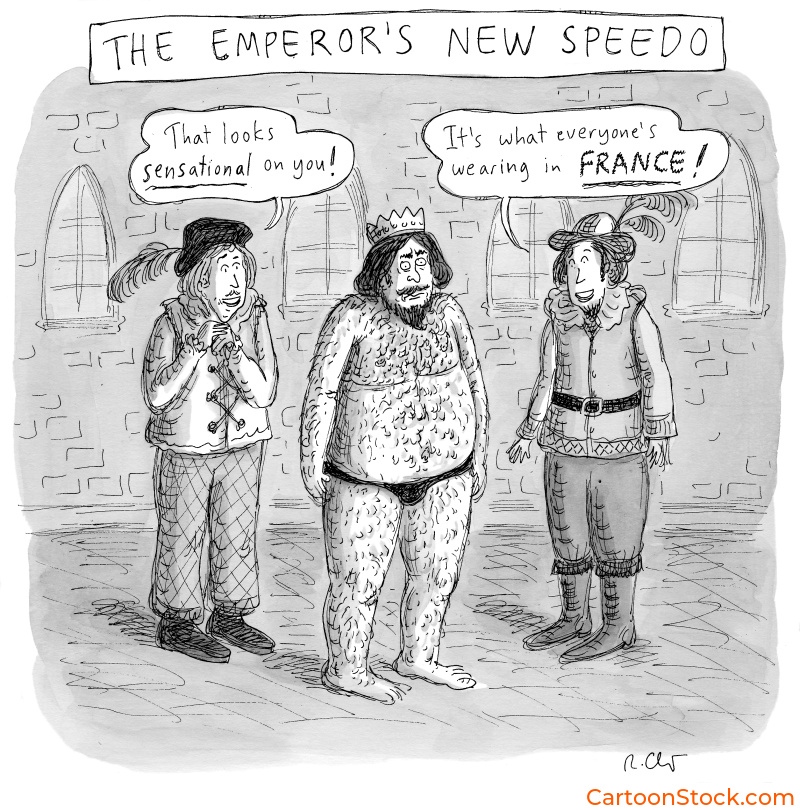
Jack Ziegler leaves much more to the imagination in this image of a full-bodied businessman making an executive decision. Inspired by the seascape, he is clear-eyed about the present and planning for the future. Placing a stock character in an expected setting drives the humor, and the rolled up pant legs are a comical sight.
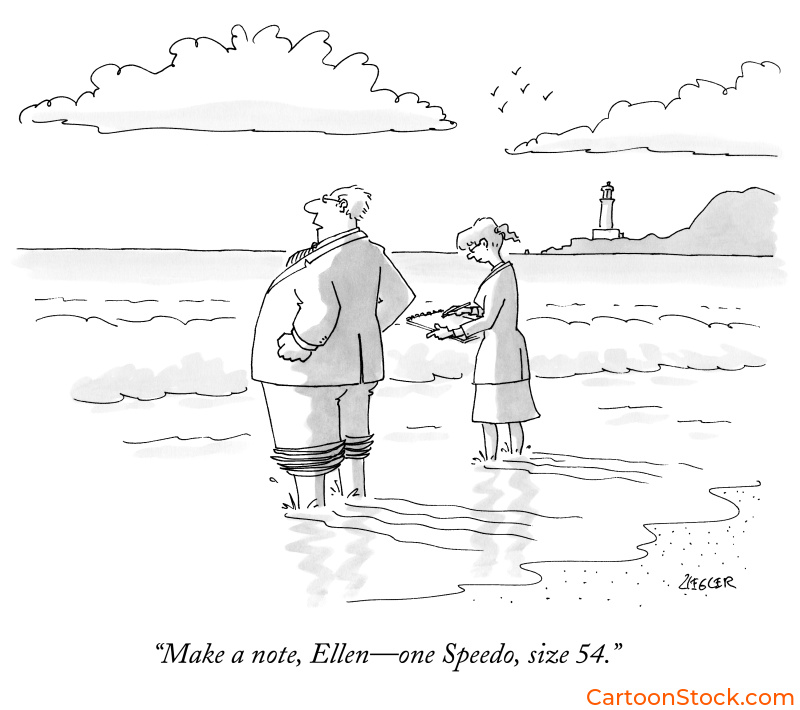
Even tough guys like the beach. Apparently this crime boss in Bob Mankoff’s cartoon seeks the kind of protection not provided by SPF 50 sunscreen.

A common cliché in beach cartoons is men ogling women. William Haefeli explores the reverse in his unique style. These three women size up the unseen male figure and damn him with faint praise. Just as we are left to imagine what this fellow looks like, we can only guess what is meant by the missing details.
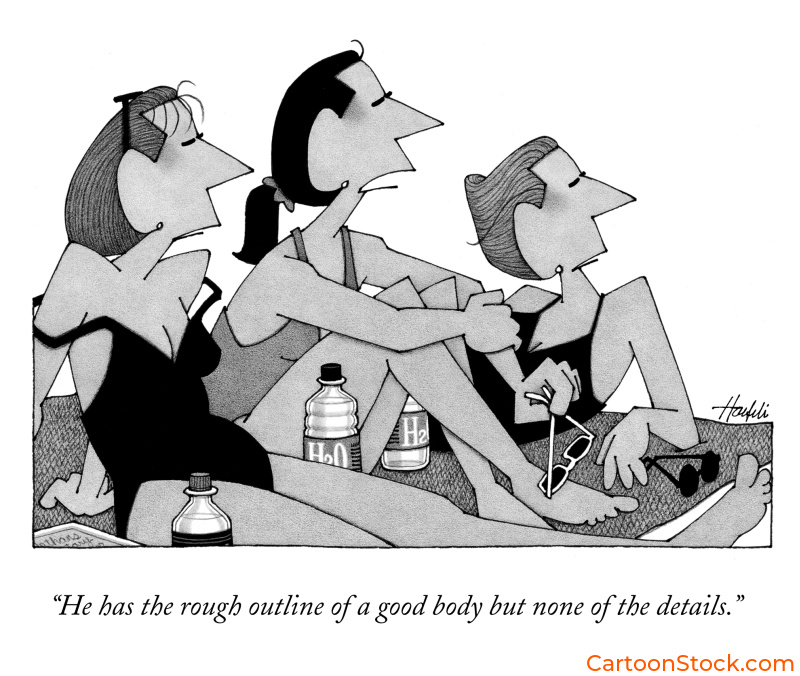
Next is a cartoon that perhaps only a woman would dare create. Marisa Acocella’s superbly coiffed fashionistas have divided the world of interesting men into two categories. The man under discussion falls into the lesser category.

Pat Byrnes offers a bit of a throwback cartoon featuring a bikini-clad young woman, a middle-aged guy, and his annoyed wife. His forgetfulness underscores his age. One of the nice artistic touches is how the young woman is walking away as if into the cloud and, one may assume, into the man’s fantasies.
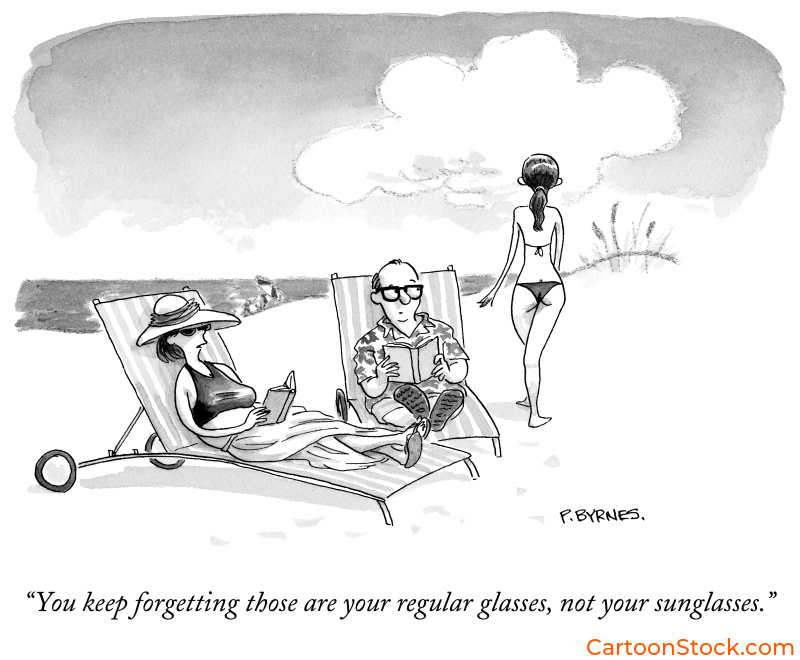
The desert island is a cartoon theme that has spawned endless variations. John O’Brien’s take is unique and strangely unsettling. The island’s inhabitant may be resourceful or insane or perhaps both. One senses a savage joy he has taken in his creation, which he appears to be modeling for us. Choose your pronoun, this character is true to himself/themselves. An artistic note: the curved horizon suggests a very high vantage point, yet we are close enough to discern the tiniest details. O’Brien’s images are always intriguing.
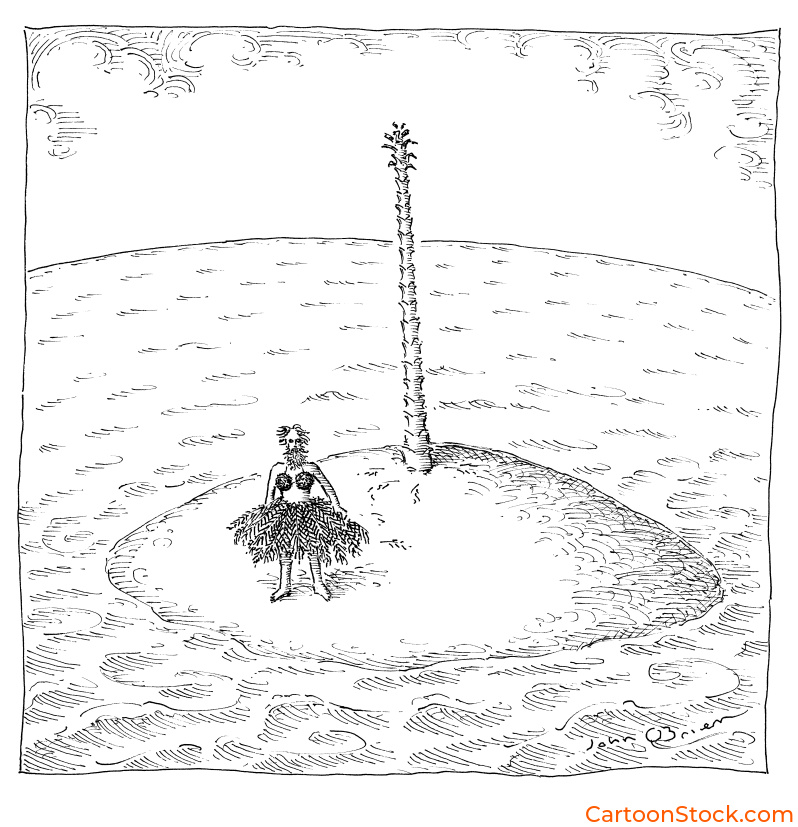
We end on a wacky note, care of George Booth, whose career as a cartoonist dates back to World War II. Her outfit screams tropics, while his posture indicates a preference for a Barcalounger. The elements of a Booth cartoon are all here: animated wife, husband glued to his newspaper, a hanging plant and light fixture. The frazzled cat’s mad scamper up the stairs presages a scene left to the viewer’s imagination.


